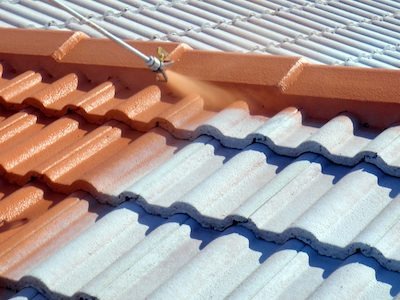Roofing is a critical component of structure for several necessary reasons:
Protection from the Elements: One of the first features of a roof is to supply shelter and protection from environmental elements corresponding to rain, snow, wind, and extreme temperatures. It prevents water from getting into the constructing, which can trigger structural injury, mold progress, and different issues.

Structural Integrity: Roofs play an important role in maintaining the structural integrity of a constructing. They distribute the load of the roof and any masses (e.g., snow) evenly to the walls and foundation. A well-designed and correctly constructed roof ensures the stability and security of the whole structure.
Aesthetics and Design: Roofs are a visible and outstanding a part of a building's exterior. Architects use roof design to enhance the overall aesthetics of a construction. The shape, materials, and style of the roof can contribute to the architectural character and attraction of a building.
Environmental Considerations: Sustainable architecture locations an emphasis on energy efficiency and environmental responsibility. Roofing materials and design can impression a building's power performance. For example, cool roofs can replicate extra daylight and take in much less warmth, lowering cooling costs and urban heat island effects.
Natural Lighting and Ventilation: Roof design can incorporate options like skylights, dormers, and roof vents to provide pure lighting and air flow inside a building. Check out here can improve indoor comfort and reduce the necessity for synthetic lighting and mechanical ventilation.
Historical and Cultural Significance: In some architectural kinds, such as Gothic or Victorian, the roof could be a key element that reflects the historic and cultural context of a building. Roof details and shapes can inform a story in regards to the era in which a construction was built.
Space Utilization: Roof design can create extra usable space within a building, such as attic rooms, rooftop gardens, or outdoor residing areas. Architects usually contemplate tips on how to maximize space and performance when designing roofs.
Energy Efficiency: Energy-efficient roofing materials and design can contribute to a constructing's general vitality performance. Proper insulation and air flow can help regulate indoor temperatures and scale back heating and cooling costs.
Safety and Fire Resistance: Roofing supplies are chosen with safety in mind. Some materials, like fire-resistant roofing, can help forestall the spread of fires in a constructing, providing priceless time for occupants to evacuate.
In abstract, roofing is a fundamental facet of architecture that combines useful and aesthetic issues. It not only protects the interior of a building from the elements but in addition contributes to the overall design, sustainability, and safety of a construction. Architects rigorously think about roofing materials, shapes, and options to attain their design objectives whereas making certain the consolation and well-being of building occupants..
